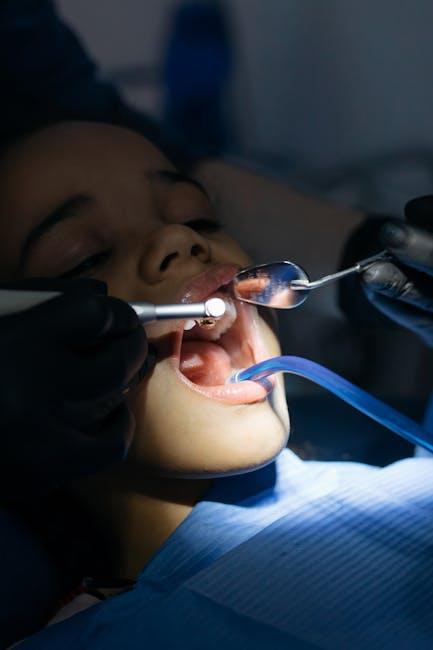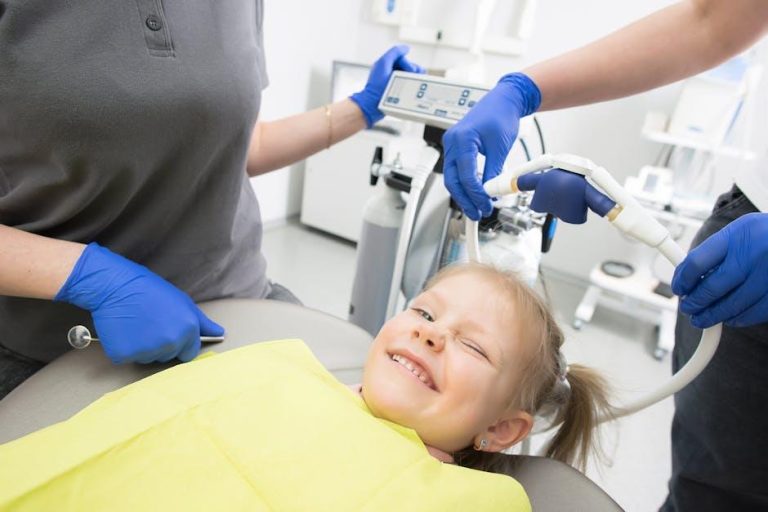
1 in 3 Kids Has Dental Problems, Poll Finds – U.S. News & World Report
Recent findings from a comprehensive poll reveal that 1 in 3 children in the U.S. is affected by dental problems. With such a high prevalence, pediatric dental health deserves more attention than ever before. This article explores the common dental issues facing children today, tips for prevention, and expert insights to help parents safeguard their children’s oral health.
Introduction: Understanding the Scope of Kids’ Dental Problems
Dental health is a crucial component of a child’s overall well-being. However, statistics from the latest U.S. News & World Report poll highlight a worrying trend: nearly 33% of children in the United States suffer from dental problems. These issues range from cavities and tooth decay to gum diseases and enamel erosion. Pediatric dental problems, if left untreated, can lead to severe pain, infections, and even affect speech development and academic performance.
Common Dental Problems in Children
Understanding common dental ailments helps parents and caregivers identify early symptoms and seek timely care. Below are the most frequent dental problems reported in children:
- Dental Cavities (Tooth Decay): Caused by plaque buildup and poor oral hygiene, cavities remain the most widespread dental issue among kids.
- Early Childhood Caries (Baby Bottle Tooth Decay): Often results from prolonged exposure to sugary drinks and improper feeding habits.
- Gingivitis: Inflammation of the gums due to plaque buildup, causing redness and sometimes bleeding.
- Teeth Sensitivity and Enamel Erosion: Frequently caused by acidic food and beverages, or aggressive brushing.
- Misaligned Teeth: Dental crowding or bite issues that can arise from genetics or early loss of baby teeth.
Dental Problems Poll – Key Statistics
| Dental Problem | Percentage of Children Affected |
|---|---|
| Dental Cavities | 26% |
| Gingivitis | 12% |
| Early Childhood Caries | 9% |
| Enamel Erosion | 7% |
| Misaligned Teeth | 5% |
Why Are Dental Problems So Common Among Children?
Several factors contribute to the high incidence of dental problems in kids:
- Poor Oral Hygiene Habits: Children often neglect brushing and flossing, leading to plaque buildup.
- High Sugar and Acidic Food Consumption: Excessive intake of candies, sodas, and fruit juices increases cavity risk.
- Limited Access to Dental Care: Families with financial or transportation challenges may skip routine dental visits.
- Lack of Parental Awareness: Some parents underestimate the importance of primary teeth and early dental care.
Benefits of Early Dental Care for Kids
Starting dental care early brings numerous advantages:
- Prevents Tooth Decay and Gum Disease: Regular check-ups help catch problems before they escalate.
- Promotes Good Oral Hygiene Habits: Early dental education sets the foundation for lifelong health.
- Improves Confidence and Speech: Healthy teeth support normal speech development and a confident smile.
- Reduces Risk of Pain and Infection: Timely treatments can prevent painful complications.
Practical Tips to Prevent Dental Problems in Children
Parents can take actionable steps to protect their children’s oral health:
- Establish a Brushing Routine: Encourage kids to brush twice daily with fluoride toothpaste.
- Floss Regularly: Help children floss to remove plaque between teeth.
- Limit Sugary Snacks and Drinks: Replace sugary treats with healthier options like fruits and vegetables.
- Schedule Regular Dental Check-ups: Visit the dentist every six months for cleanings and evaluations.
- Use Fluoride Mouthwash or Supplements: Ask the dentist if your child needs fluoride for extra protection.
- Model Good Habits: Children often imitate parents; demonstrating good oral care reinforces their behavior.
Case Study: A Family’s Journey to Better Oral Health
Meet the Johnson family, who faced dental challenges with their two children, ages 5 and 7. Both kids struggled with cavities due to inconsistent brushing and frequent candy consumption. After consulting their pediatric dentist and implementing a strict dental hygiene regimen—brushing twice daily, cutting down sugars, and attending regular appointments—the children’s dental health improved significantly within a year.
This real-life example stresses the importance of parental involvement and consistency in preventing pediatric dental problems.
First-hand Experience: Pediatric Dentist Dr. Emily Carter Explains
“Many parents don’t realize that baby teeth play a vital role in their child’s development. We encourage families to prioritize dental health from infancy. With proper care and early intervention, most dental problems can be prevented or effectively managed.” — Dr. Emily Carter, DDS.
Conclusion: Prioritizing Children’s Dental Health for a Brighter Future
With 1 in 3 kids experiencing dental problems, it’s clearer than ever that pediatric oral health must be a top priority for parents, caregivers, and healthcare providers alike. Preventative care, education, and regular dental visits are the keys to nurturing healthy smiles in children that last a lifetime.
By understanding common dental issues, recognizing symptoms early, and practicing effective preventive strategies, families can dramatically reduce the risk of dental problems. Invest in your child’s dental health today and watch them grow up with brighter, healthier smiles!


